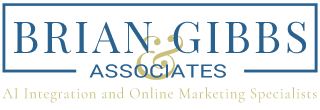Unlocking the Key to Business Success: Find Your Target Audience
Why Understanding Your Target Audience is Crucial for Business Success
Knowing your target audience is essential for the success of any business. Whether you’re a small business owner or a marketing executive at a large corporation, understanding your target audience can make or break your marketing efforts. Knowing and understanding your perfect customer helps you to create effective marketing strategies that will reach and resonate with your ideal customers.
It also helps you to tailor your products or services to meet their needs and wants. When you know who your target audience is, you can create messaging that speaks directly to them, which increases the chances of converting them into loyal customers.
The Benefits of Knowing Your Audience

When you identify your target audience, they will be more likely to buy your product.
There are many benefits to taking the time to understand your target market. First, it helps you focus on the right people.
By identifying who your ideal customer is, you can allocate resources only where they’ll be most effective. Second, knowing what motivates and interests them will help ensure that all communication channels are used in a relevant way.
This includes everything from social media posts to email campaigns. Targeting messages across different channels will improve engagement by reaching a larger percentage of people likely interested in that precise message.
Educating yourself on how and when they prefer to engage with brands allows businesses to create content campaigns strategically scheduled around peak times of engagement for increased efficiency as well as better engagement rates. Essentially, by understanding all aspects surrounding one’s target market– from details like age range or income levels down through specific nuances about personal interests- organizations can more effectively speak directly to each potential customer, building stronger connections with their audiences than ever before!
Defining Your Target Audience
Knowing your target audience is crucial to the success of any business or marketing campaign. Defining your audience requires identifying both demographics and psychographics.
Identifying Demographics
The first step in defining your target audience is identifying demographics such as age, gender, income, and location. This information can be gathered through market research or by analyzing customer data. Understanding these basic demographic traits help businesses tailor their marketing messages to specific groups.
For example, if you’re targeting a younger demographic, you may want to use more social media and influencer marketing strategies to reach them. Age is especially important as it can affect how a message is received.
A younger crowd might respond well to pop culture references and humor, while older people might prefer more straightforward messaging. Gender can also play a role in how messaging is received, but it should never be used to stereotype an entire group.

When you connect with your target audience, it will help you understand how to marketing to them.
Psychographics
Beyond demographics, understanding the psychographics of your target market – values, interests, personality traits – will help fine-tune your marketing messages even further. Values are what customers hold most dear – whether it’s sustainability or affordability – it’s important that businesses align with their customers’ values in order to create trust and loyalty. Interests can include hobbies or life events that customers may identify with.
For example, if you’re selling exercise equipment, targeting individuals who are interested in health and fitness could lead to higher conversion rates. Personality traits can also play a role in purchasing decisions.
Someone who enjoys luxury items may be willing to pay more for quality products, while someone who values practicality may prioritize functionality over aesthetics. Understanding the demographics and psychographics of your target audience provides valuable insight into creating effective marketing messages and building customer loyalty.
Understanding Your Audience’s Needs and Wants
Your target audience is a group of people who are interested in what your business offers. They have unique needs, wants, and preferences that you need to understand to create effective marketing strategies. To get a deeper understanding of your audience, you can conduct surveys or focus groups.
Surveys are an excellent way to gather quantitative data about your audience’s preferences, while focus groups provide qualitative insights into their thoughts and feelings. When designing surveys or focus groups, ensure that the questions are straightforward and easy to answer.
Open-ended questions will allow your audience to express themselves freely without restrictions. You can use online survey tools like SurveyMonkey, Google Forms, or Typeform to create online surveys that are easy for participants to complete.
Conducting Surveys or Focus Groups

To get a better understanding of your target, conduct market research.
Surveys can be conducted through email or social media sites like Facebook or Twitter. If you have a website with high traffic volumes, you can add a pop-up survey form that appears when visitors land on your site.
Focus groups, on the other hand, involve bringing together small groups of people who represent your target market for discussions in person or virtually. Focus groups offer more in-depth insights into the opinions and attitudes of your target audience as participants can share their thoughts with each other, which might lead to new ideas and suggestions about what they want from businesses like yours.
Analyzing Social Media Engagement and Feedback
Social media is another powerful tool for gathering information about how well your product/service fits into what consumers need/want. You should analyze engagement metrics on social media platforms such as likes, shares, comments, etc., which provides insight into how well-received content is among users belonging in different age ranges.
Analyzing the feedback from social media posts like these comments/reviews individuals leave after engaging with brand content will give businesses valuable insights into what customers want from them while identifying areas of improvement. Social media data analysis also allows businesses to see what competitors are doing to attract and keep customers, which can be a great source of inspiration.
Knowing your audience’s needs and wants is crucial for developing effective marketing strategies that resonate with them. Surveys, focus groups, and social media engagement analysis provide access to important information about your target audience, which can inform business decision-making and help develop a strong brand image that resonates with customers.
Creating Buyer Personas
To truly understand your target audience, you need to go beyond just looking at demographics and psychographics. You need to create what is called a “buyer persona” – a fictional representation of your ideal customer.
This allows you to put yourself in their shoes and see the world from their perspective. When creating a buyer persona, you want to start with the basics like age, gender, income, and location.
But then you want to dive deeper into their goals, challenges, and behaviors. What motivates them?
What keeps them up at night? What are they passionate about?
By answering these questions, you can create a much more detailed portrait of your ideal customer. For example, if you’re selling skincare products for women over 50, your buyer persona might be “Susan”.
Susan is a 55-year-old woman who lives in the suburbs with her husband. She’s concerned about wrinkles and age spots but also cares deeply about using natural ingredients that are gentle on her skin.
She wants to look her best for her upcoming high school reunion but doesn’t want to spend too much money on expensive treatments. By creating this fictional character, you can tailor your marketing message specifically to Susan’s needs and wants.
Outlining Goals, Challenges, and Behaviors
Once you’ve created your buyer persona(s), it’s important to outline their goals, challenges, and behaviors. For example:
Goals: What are they trying to achieve? Are they looking for financial security?
More free time? Improved health?
Challenges: What obstacles are standing in their way? Do they have limited resources?
Are they dealing with health issues or family problems? Behaviors: How do they behave when making purchasing decisions?
Do they research extensively before buying or make impulse purchases based on emotion? By understanding these aspects of your target market, you can tailor your marketing message in a way that speaks directly to their needs and wants.
For example, if your buyer persona is a single mom looking for affordable childcare, you might emphasize the affordability and flexibility of your services. If your buyer persona is a busy executive trying to stay healthy, you might emphasize the convenience and time-saving benefits of your meal delivery service.
Creating detailed buyer personas can take some time and effort, but the payoff is well worth it. By truly understanding your target market, you can create a marketing strategy that resonates with them on a deeper level and ultimately leads to more sales and business success.
Tailoring Your Marketing Strategy to Your Audience

Engage with your target audience where they are.
Have you ever received a marketing message that seemed completely tone-deaf? Maybe it used outdated slang or made assumptions about your interests that were completely off-base. If so, you probably didn’t feel very inclined to engage with that brand.
That’s why it’s important to tailor your marketing strategy to match the preferences of your target audience. One of the most important aspects of this is adapting your language and tone.
Depending on who you’re trying to reach, this could mean using more casual or formal language, incorporating humor or sarcasm, or using industry-specific jargon. It’s also crucial to understand what kinds of messages will resonate with your audience – for example, highlighting how your product can make their lives easier or appealing to their desire for adventure and excitement.
Choosing the right channels to reach them
Even if you have a perfectly crafted marketing message, it won’t be effective if you’re not reaching your audience in the right places. Different groups tend to prefer different channels – for example, younger audiences might be more active on social media, while older audiences might prefer traditional advertising methods like television commercials.
Additionally, even within a single channel, there can be nuances in how people consume content – someone who likes short-form video content might not be as interested in long-form blog posts. By understanding what channels and formats are most likely to reach your target audience and tailoring your content accordingly, you’ll increase the chances that they’ll engage with and respond positively to your brand.
Keeping Up with Changing Trends in Your Industry

Small business marketers must keep up with the latest trends to get the best picture of your target avatar.
The world is constantly changing, and the same is true for every industry. New products, services, trends, and technologies emerge regularly, each with the potential to disrupt the market.
As a business owner or marketer, keeping up with these changes is critical. Not only does it allow you to stay one step ahead of competitors, but it also helps you better understand your target audience.
Staying on top of industry trends means paying attention to what your competition is doing, keeping up with new product releases and updates in technology, and following thought leaders in your industry. Social media sites such as LinkedIn are great for following industry influencers who regularly share their thoughts on the latest developments.
Sign up for industry newsletters or blogs that provide information on emerging trends and how they may impact consumer behavior. By staying informed on these advancements, businesses can adapt marketing strategies accordingly.
Staying Up-to-Date with Trends that May Affect Your Target Audience
In addition to focusing on broader industry trends, it’s important to pay attention to specific movements that may affect your target audience directly. For example, if you sell eco-friendly products, then paying attention to global discussions around climate change and consumer habits towards environmentally-friendly choices are essential. To stay informed about topics that matter most to your audience, consider conducting customer surveys or focus groups regularly.
These are great ways to get feedback directly from your customers about what they care about most– allowing businesses to better understand their customers’ needs so they can adjust marketing messages accordingly. Overall by tracking general industry trends along with those affecting a business’ target audience specifically, companies can create strategic marketing campaigns tailored around current events impacting their customers’ lives, improving brand awareness while fostering loyalty among existing customers.
Conclusion
Knowing your target audience is vital for any business, big or small. Knowing who your customers are, their needs and wants, and what drives them to make a purchase can greatly impact the success of your business. By tailoring your marketing efforts to match the preferences and behaviors of your target audience, you can improve engagement and ultimately increase conversions.
One of the key benefits of understanding your target customer is that it allows you to create a better customer experience. When you know what motivates your customers, you can personalize their interaction with your brand in a way that resonates with them.
This means that they are more likely to engage with you on social media, share their positive experiences with others, and become loyal customers. Another benefit of knowing your target audience is that it allows you to stay ahead of the competition.
By keeping up-to-date with changing trends in your industry and adapting marketing strategies accordingly, you are able to meet the evolving needs of your customers before anyone else does. This gives you an edge over competitors who may not be paying attention or may be slow to react.
Understanding your target client is essential for achieving business success. Taking the time to define who they are and what drives them, creating buyer personas based on those insights, tailoring marketing strategies accordingly, and staying up-to-date with industry trends will help ensure that they will stay engaged with your brand over time leading to increased revenue growth.

